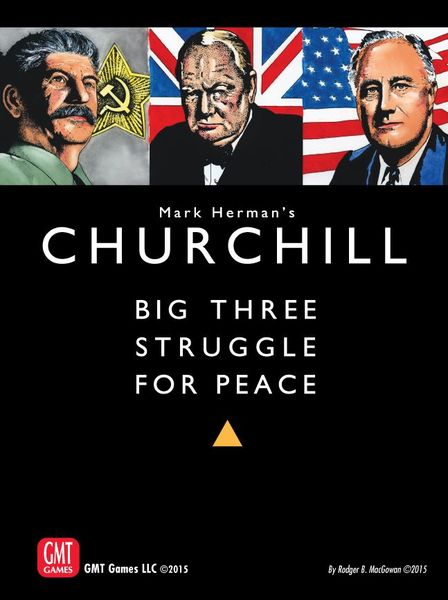Churchill (2015) Board Game
Churchill is a board game that was released in 2015, designed by Charles Kibler, Rodger B. MacGowan, and Mark Simonitch. The game is set during World War II and focuses on the political and military decisions made by the Allied leaders as they work together to defeat the Axis powers.
Game Components of Churchill
How To Setup Churchill
To set up the game, players first arrange the conference table board, placing the conference cards and issue tokens. Each player selects their role (Churchill, Roosevelt, or Stalin) and draws a hand of seven staff cards from their respective deck. The game includes a detailed rulebook, but a short training scenario is provided to help new players get started.
Gameplay Mechanics and Game Objective
– Card Play: Players use staff cards to debate and resolve issues at conferences.
– Conference Phases: Agenda, Meeting, and Decision segments.
– Leader Intervention: Each leader has a powerful card with bonuses and potential penalties.
– Military and Political Actions: Implementing issues on multiple battlefronts and influencing global politics.
– Cooperate to defeat the Axis powers (Germany, Italy, Japan) while competing to shape the post-war world.
– Win the most Cold War points by controlling surrendered Axis powers, governments, networks, and resolving global issues.
Player Experience
**Churchill** is a game of constant negotiation and strategy. Players must balance cooperation to win the war with competition to secure post-war advantages. Each conference involves intense debates and strategic card play, using historical figures like Churchill, Roosevelt, and Stalin. The game requires situational assessment, bluffing, and creativity, with players always engaged and no significant downtime.
Pros
Cons
Personal Thoughts on Churchill
**Churchill** is ideal for experienced board game enthusiasts who enjoy strategic depth and historical themes. It’s not a family board game but is perfect for those who appreciate the intricacies of political and military strategy. The game is highly recommended for those who enjoy games like **Pericles** and **1919**, also by Mark Herman. While it has a steep learning curve, it offers a rich and deeply satisfying gaming experience that is well worth the investment of time and effort.
We are supported by our audience. When you purchase through links on our site, we may earn an affiliate commission, at no extra cost for you. Learn more.

